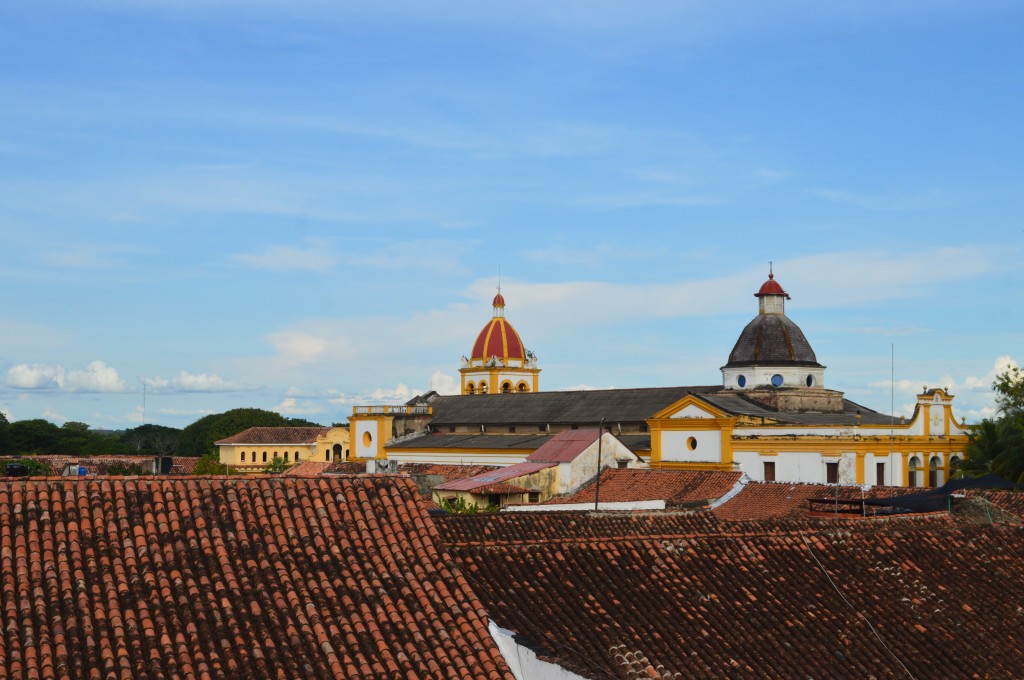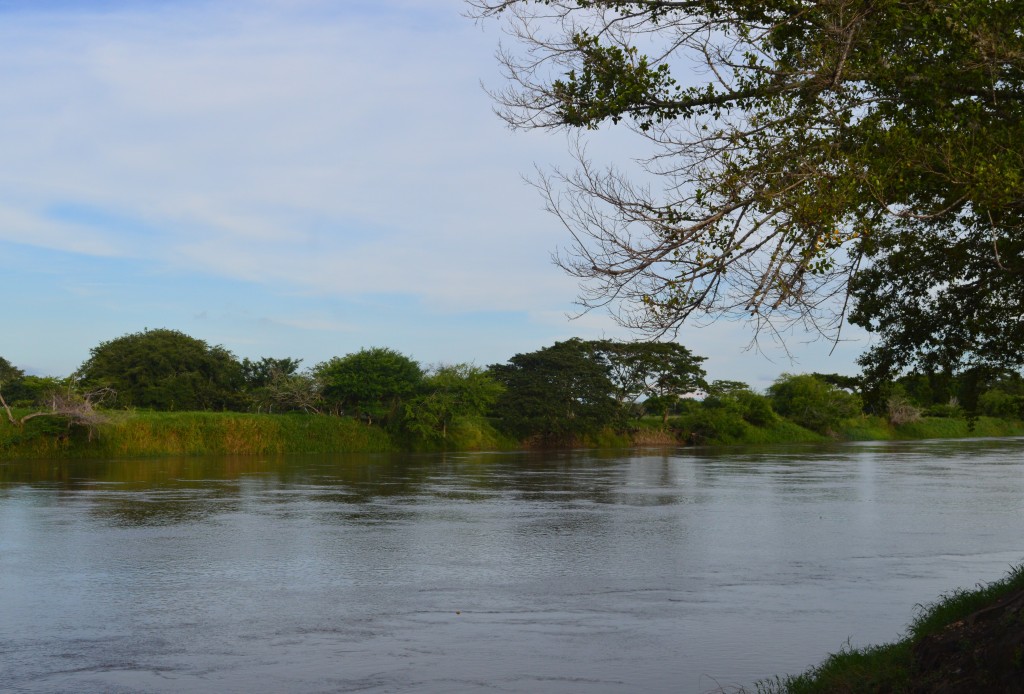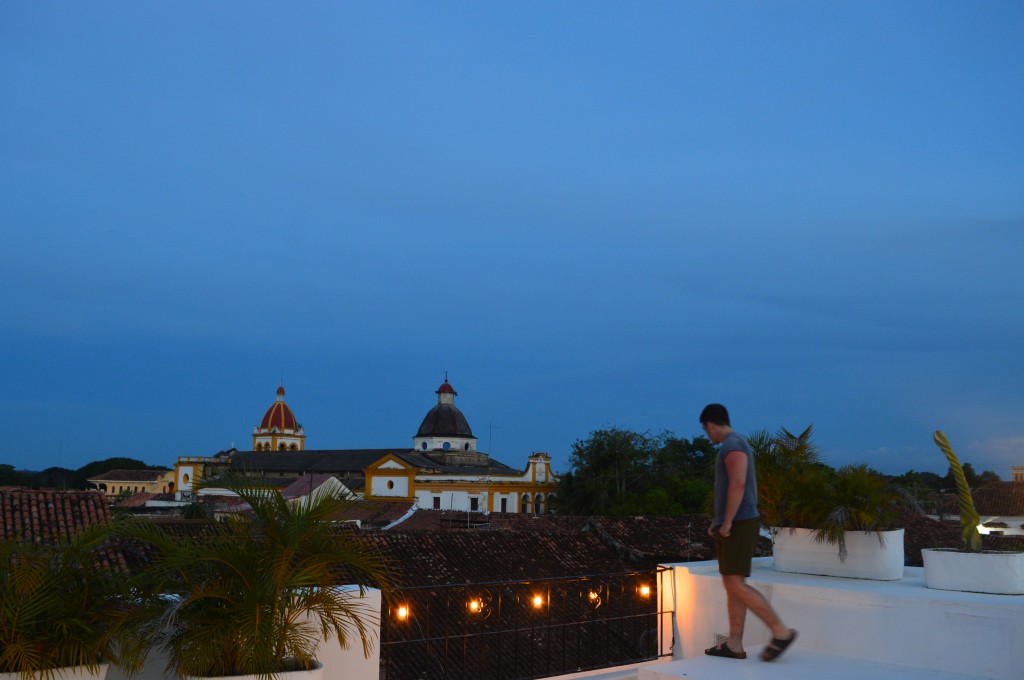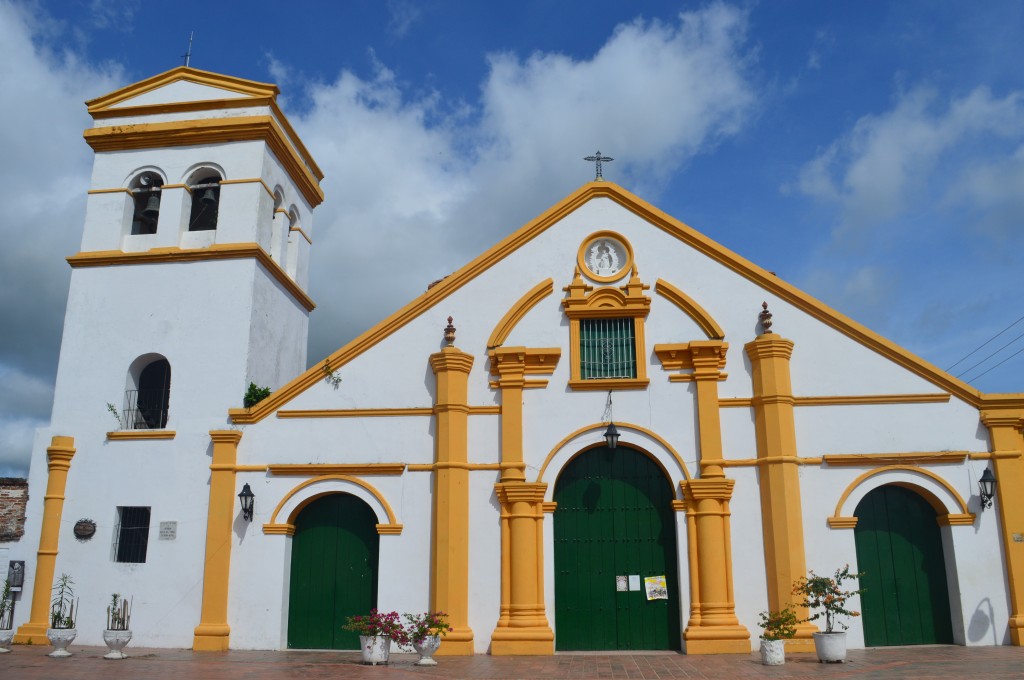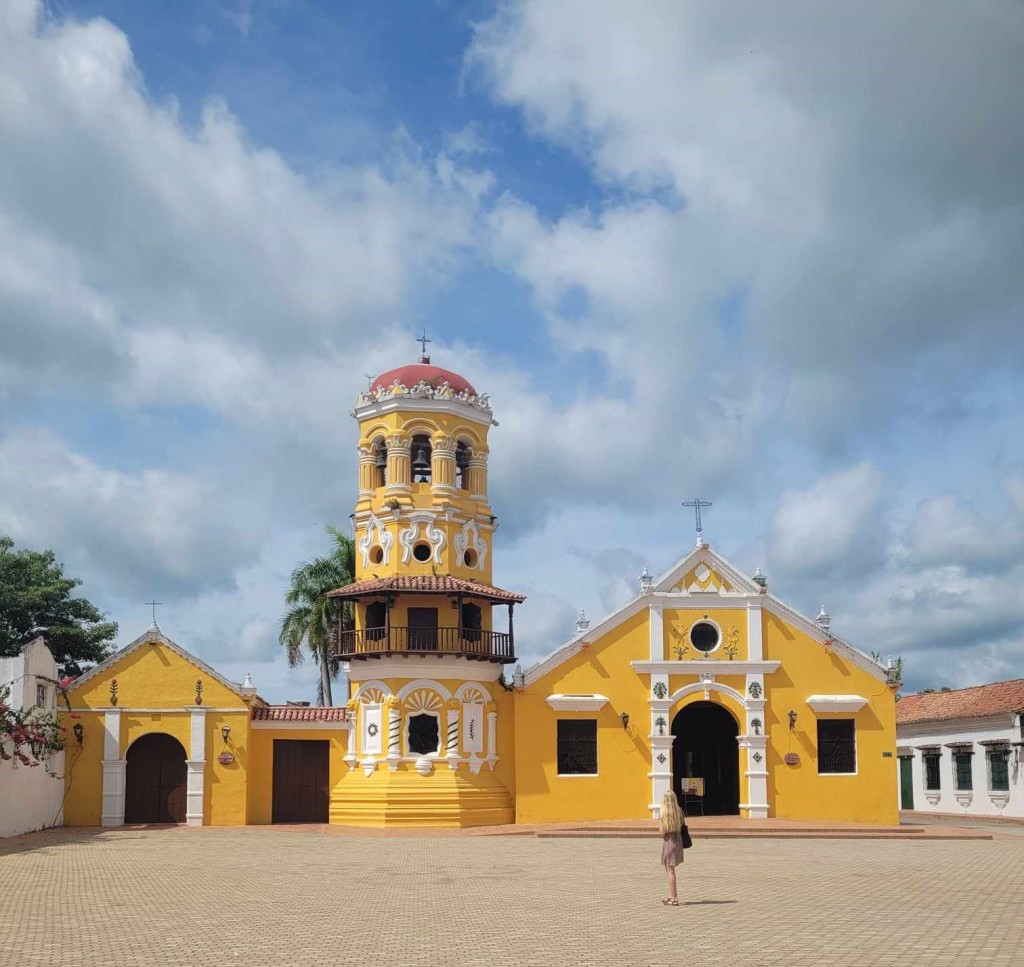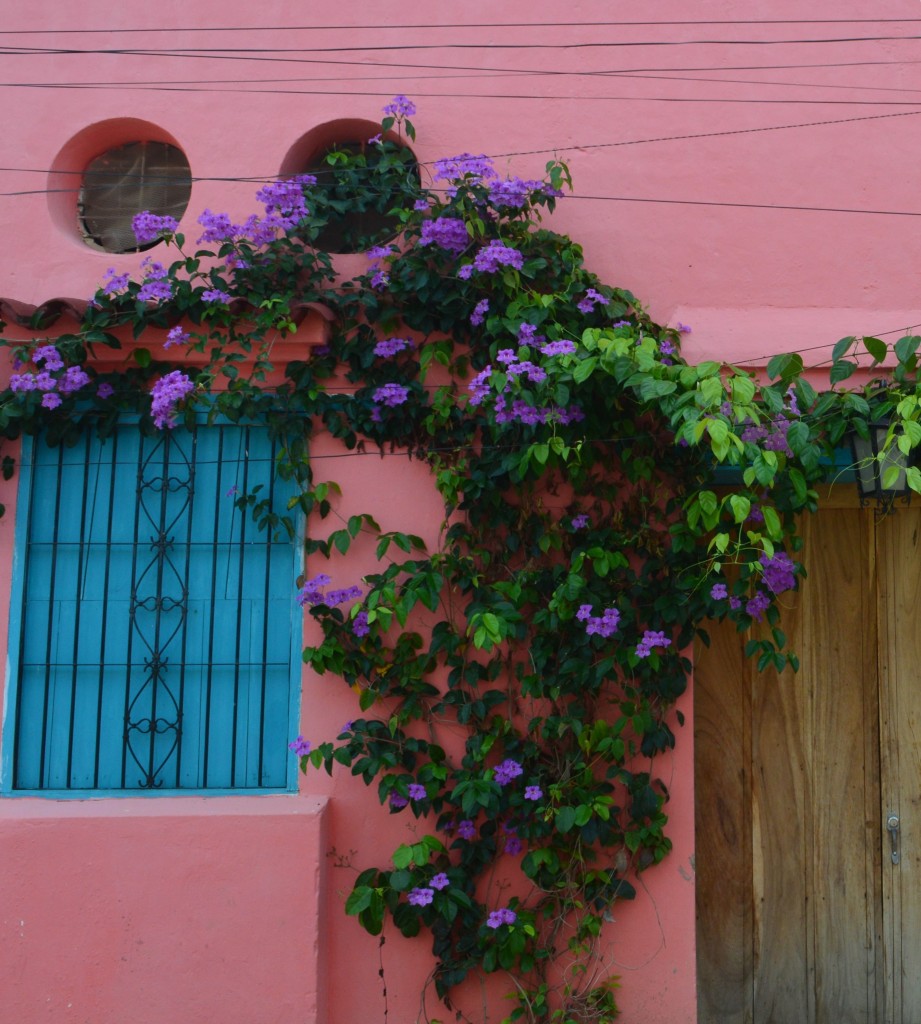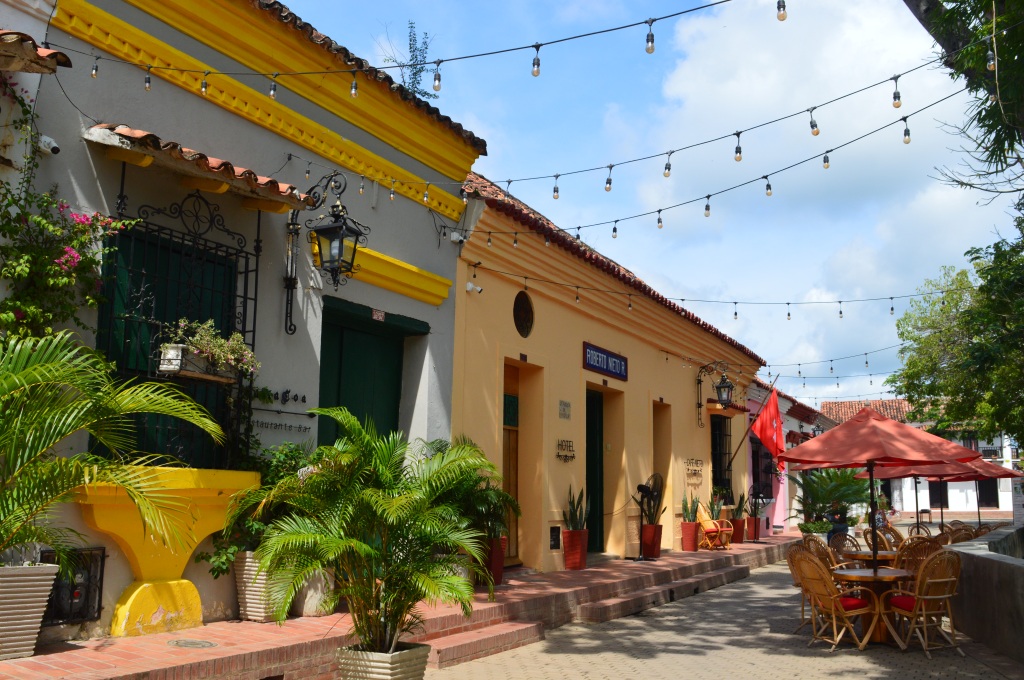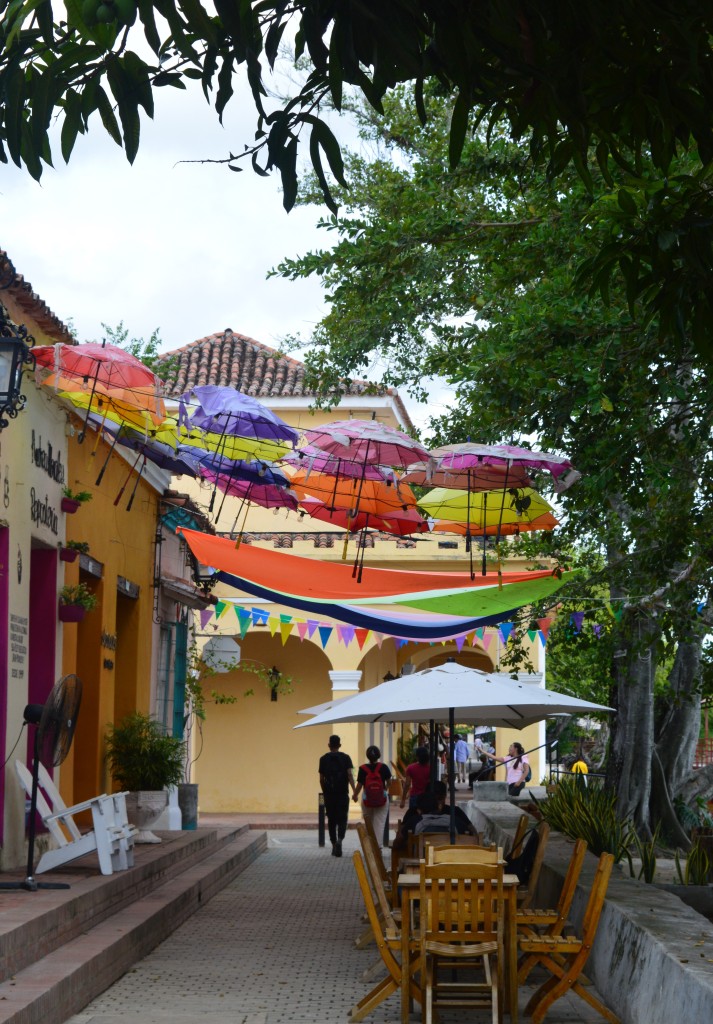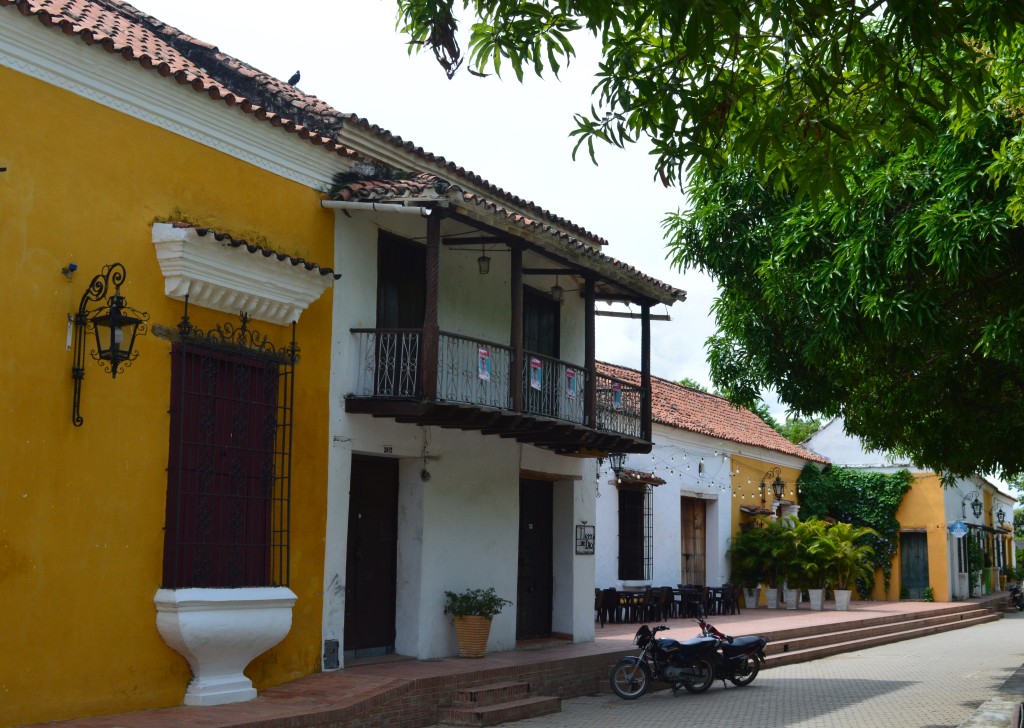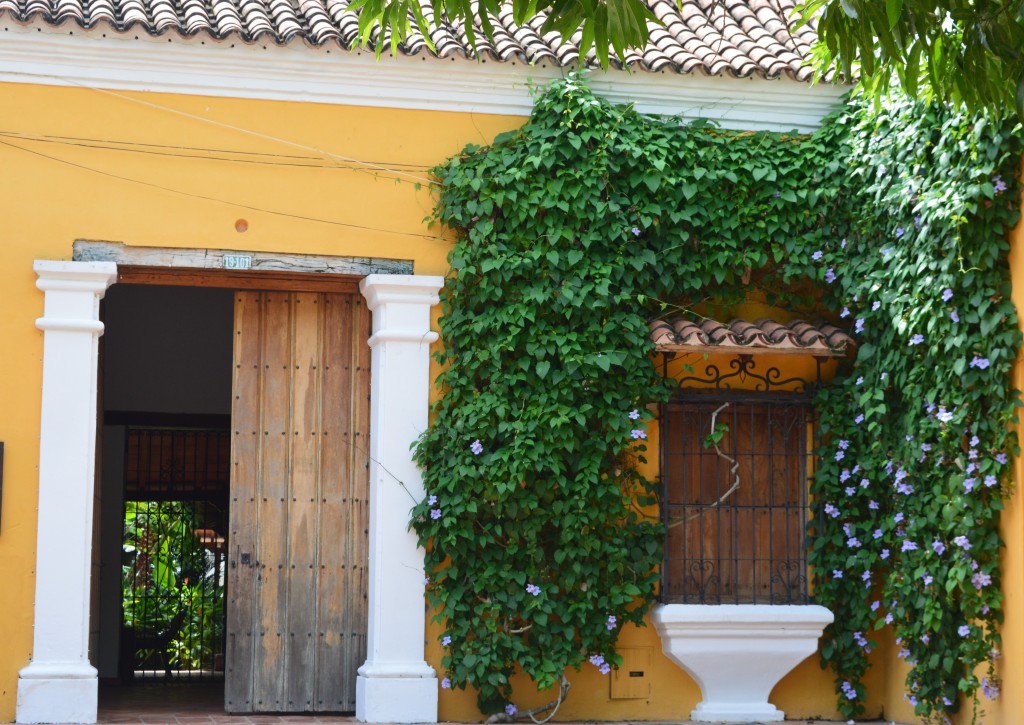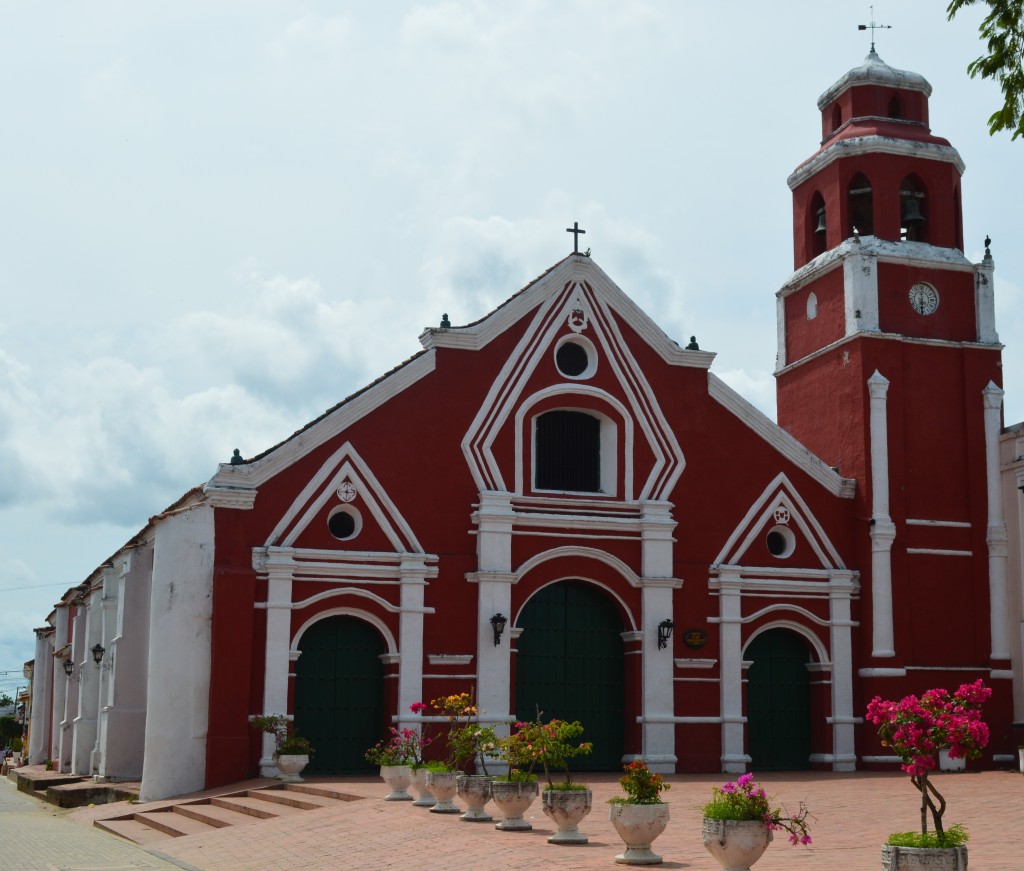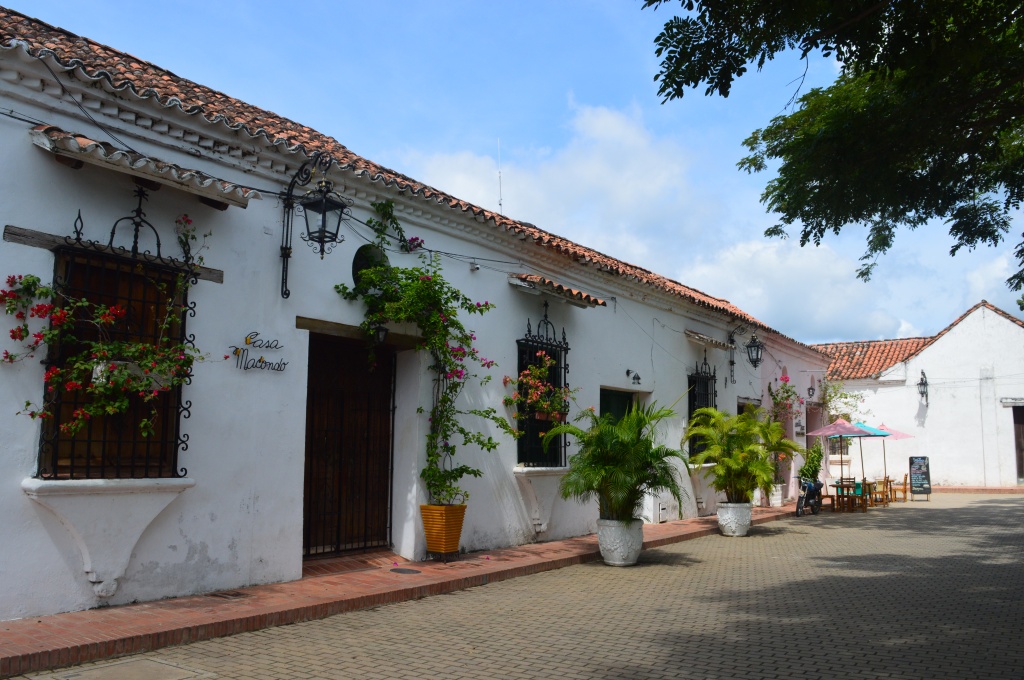For our honeymoon trip to Colombia in October 2023, I wanted to ensure we spent some time exploring a smaller, somewhat lesser known town instead of just staying in the bigger, touristic spots. The name Santa Cruz de Mompox came up on a blog I was reading. After seeing some photos, I was intrigued.
Located in the department of Bolívar, 272 kilometres away from Cartagena, Santa Cruz de Mompox is famous for being the first town in Colombia to declare independence from Spain, in 1810. Mompox sits next to the Magdalena – Colombia’s main river and a key transport link in the country’s history. The preservation of beautiful architecture helped Santa Cruz de Momox become designated as a UNESCO World Heritage Site in 1995.
To get to Mompox from Cartagena, we booked a private car ride with Toto Express. A small business with no official website, I heard of it after seeing its name mentioned in some travel articles (the email address is totoexpress2@hotmail.com). With the help of Google Translate, I emailed to request some dates. The cost of a private return trip for two people was 1,200,000 pesos, payable in cash at the end of the service. This lined up with what I’d seen quoted by other travellers. Equivalent at the time of booking to $380 CAD, this might seem steep to anyone who prefers travelling on a tighter budget. We went with this option because in terms of time and practicality, it was much more convienent than taking a public bus (and screw it, we were on honeymoon!)
Admittedly, because of how “unofficial” Toto Express seemed as a business, a small part of me wondered if the driver would show. Alas, at 10am sharp on a Friday morning in October, a smiling man named Arnoldo picked us up from our hotel in Cartagena, and we commenced the 5.5 hour drive. Horns beeped continuously as we made our way through the suburbs of Cartagena, passing dilapidated buildings and street vendors selling fruit. Motorcyles zoomed in between the traffic, females in skinny jeans calmly holding onto the back of the driver with no apparent fear of almost colliding with vehicles. Arnoldo was unfazed by the chaos, whistling along cheerfully to Latin music. His English was limited and our Spanish is basic so there could not be a ton of conversation unfortunately, but he was very friendly and would check in on us.
On the way to Mompox, we got a glimpse of the Colombia thta not every visitor will see. In the distance we saw rolling hills and lush valleys. Cows with rippling skin on their necks grazed on on verges. We passed through towns in which vendors sold handmade crafts and hammocks and habitants led tired donkeys. Some of the houses we saw had peeling paint, roofs made of corrugated iron, and what looked like mud floors on the inside. Despite the relative lack of wealth, people seemed content. Children played on doorsteps as mothers hung laundry and stray dogs sniffed around for scraps. Some children walked along the road neatly dressed in smart school uniforms. I got the impression there was a lot of pride in wearing them.
On a few occasions, we passed through checkpoints where police officers would stop and search large wagons for drugs and other contraband – a sign of how seriously the country views this and wants to reduce crime. As we waited at one checkpoint, an unhoused man banged against our car, trying to sell us his goods. It was at this point that I realized the car windows were shaded black and Arnoldo had kepts the doors locked. We could see the potential for danger, but we did not feel unsafe.
We stopped in a town called El Carmen for a washroom break. I asked a vendor for some empanadas and struggled to comprehend the number he gave for a price. Like every merchant we came across, he was honest in giving me change when he could have easily pretended I gave him the right amount and taken more money if he wanted to. As we drove through another town, I observed boys in school uniform playing soccer in a street park. Shortly after, the car came to a halt. I heard a window open followed by the sound of Arnoldo shouting at someone. My husband said a woman had been beating her son, and Arnoldo was telling her off. As we drove away, Arnoldo signed the cross and whispered under his breath. We noticed him do this everytime we drove through a run-down area.
After driving through the town of Magangue, we entered what appeared to be lake country. Long yellow bridges took us over vast marshes. “Veinte minutos!” said Arnoldo merrily as we drove through a small village with tired-looking buildings and neglected sheds. I began to feel a little hesitant as I reflected on some of the towns we had passed through. Perhaps the photos I’d seen of Mompox had been deceiving and it wouldn’t be what I expected. But as we arrived in Mompox, we could see how comparatively developed this town was, while still maintaining older characteristics from the colonial era.
We had booked two nights at Bioma Boutique Hotel located on Carrera 2. Accompanying us up the steps and through the gate into the cool lobby, Arnoldo hugged and kissed the hotel owner before confirming a pickup time with us for our return date and wishing us a nice stay.
Bioma Boutique Hotel was freshly renovated, with a pool and a rooftop terrace complete with jacuzzi. Rooms were minimalist and bright, with a rocking chair and refurbished bathrooms. Although cheaper than a nice hotel in Canada, it was clear that this hotel was tailored to more affluent customers, and although we were on honeymoon, this admittedly made me feel a little guilty after all the scenes we had witnessed en route to Mompox.
After dropping off our belongings, we went out for a walk. Turning left up Calle 18, we passed the leafy Parque de Bolívar where kids played and parents sat chatting on benches. Soon after, we came to the Oratorio Inmaculada Concepción – a Catholic church with a regal red steeple, located in the Plaza Real de la Concepción. Translating as the Royal Square of Conception, it’s in this market square that the first Spanish settlement of Mompox was developed, in the 1500s.
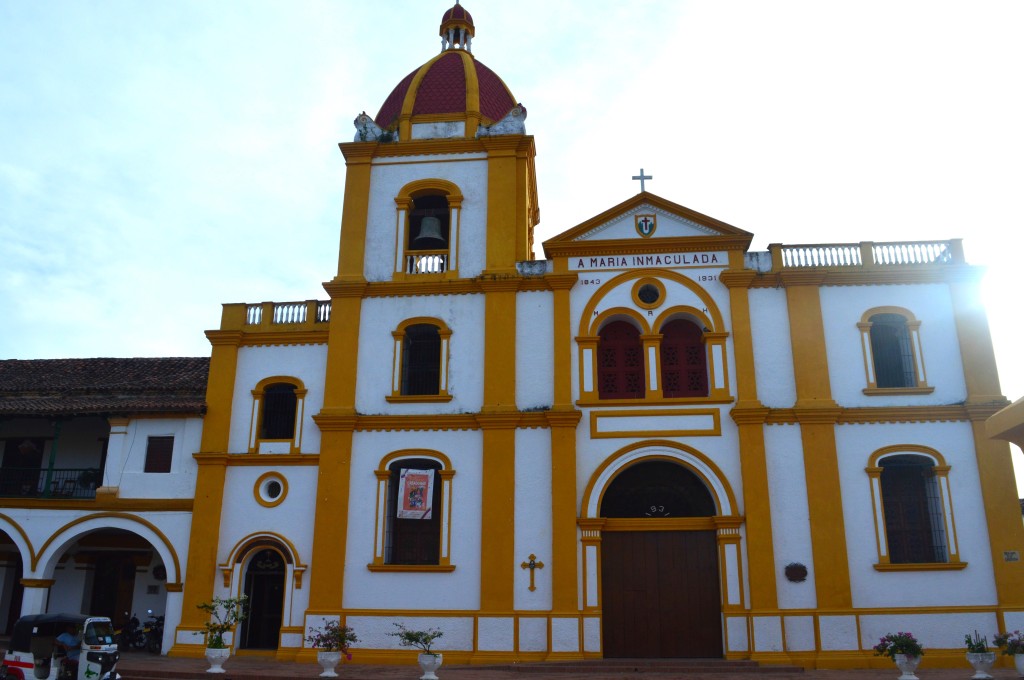
Opposite the church is the Plaza de Mercado, where shy women sat selling small trinkets, scarfs, and jewellery. The back of the market building has an exterior arcade to walk through, and through the arches you can see the Magdalena River flowing by. Boat tours are available – a good option for anyone who enjoys bird watching.
For dinner, we opted for Ambrosia Restaurante which was on the same street as our hotel. With its stone walls, open side entrance, and arched doorways, the building looked like it used to be horse stables. Fairy lights and flowers in hanging pots added to the nice ambiance. Something to note if visiting Mompox is that most menus will be in Spanish only. With no data plan for our phones and not wanting to request WiFi, we relied on my memorization of the Spanish translation for common food items. Thankfully, we got what we thought we had ordered! I could tell the waiter appreciated us trying to speak in Spanish only. Perhaps this is the reason he brought us each a bowl of delicious vanilla ice cream as a complimentary dessert…or maybe every customer is treated to this generosity. Our dinner cost 105,000 pesos with tip included – much less than the standard prices in Cartagena.
From the rooftop terrace of Bioma Boutique, we saw a sea of orange roof tiles. Colourful steeples rose up against a sky turning from blue to violet. Colombian turkey vultures landed on nearby building tops, treading awkwardly along the roof edges. The jacuzzi looked tempting, but we were already warm enough.
After having a traditional Colombian breakfast in the hotel the next morning, we walked down Calle 19 past the Plaza de La Libertad. A yellow building with a bell tower stood behind it – this is the municipal mayor’s office (Alcaldía Municipal) and it has a pretty courtyard with palm trees and flower beds.
Shortly after turning left onto Carrera 3, the street walls were decorated with vibrant murals. We then came to the striking Iglesia de Santo Domingo, with its bright white walls and yellow trim.
As we continued along the street, we passed a dozing donkey standing against a backdrop of yellow houses with orange-tiled roofs, waiting for its owner. Mopeds drove by casually, tooting greetings at familiar faces. Locals sat on dusty doorsteps smoking cigarettes with pensive faces.
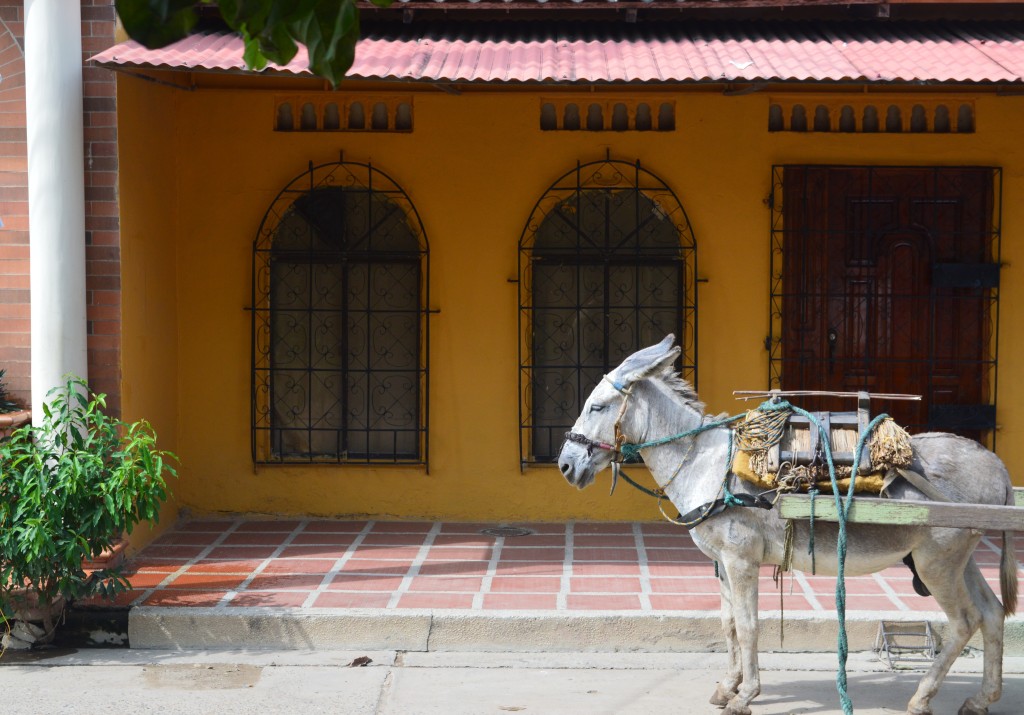
An observation that stood out for us in Mompox was how pleasantly surprised the locals looked when we greeted them with a “Hola” or “Buenos días.” It seemed they were not used to pleasantries from foreign tourists. It was an observation that gave me a twitch of sadness, but I was happy if I added some brightness to someone’s day.
After turning left up Calle 14, we came to the Iglesia de Santa Bárbara. Initially built in 1613, it’s a beautiful, intricately detailed piece of architecture which makes it no surprise that it’s one of Mompox’s most photographed churches.
From here we walked along the promenade known as the Calle de La Albarrada, adjacent to the Magdalena River. Down the quiet Calle 16 was the Basílica de San Agustin, a yellow church with a distinctive square steeple.
As we continued along the Albarrada, I was charmed by the continuous sight of pastel-coloured houses and small boutique hotels with traditional wooden doors. Gentle music played through the open windows of restaurants.
We walked under a canopy of colourful umbrellas before wandering through the market building again.
We chose to eat lunch at a casual eatery called Comedor Costeno. Without even asking, the waiter sat us directly under a large fan. I guess we looked pretty sweaty! Freshly made iced tea helped quench our thirst as we studied the menu. Without speaking any English and instead just listening carefully, we were able to work out the extras that came with our order and subsequently advise that we did not need the soup. Amazing what we can understand just by listening! I had fried red snapper with coconut rice and salad, while my hubby had barbecued pork.
Our bill came to 33,000 pesos, which didn’t seem enough. But when I checked the receipt, everything was there. I realized that the waiter had lowered the price to make up for us not having the soup with our meal. It was another unexpected act of generosity – an act that is perhaps the norm in this town, but was nonetheless unexpected by someone that lives in profit-driven, post-COVID North America.
As we ate, I noticed a movement in one of the trees outside the restaurant. An iguana was slowly crawling down a tree. I went outside to look. A French couple had also noticed the animal. As we watched with excitement, locals continued eating, indifferent to the presence of this animal they were so used to seeing. Once on the ground, the iguana looked around slowly, aware of the attention he was receiving. He then proceeded to saunter nonchalantly past the chairs and tables, slowly increasing his pace as he got further away, as if trying to leave a crime scene unnoticed.
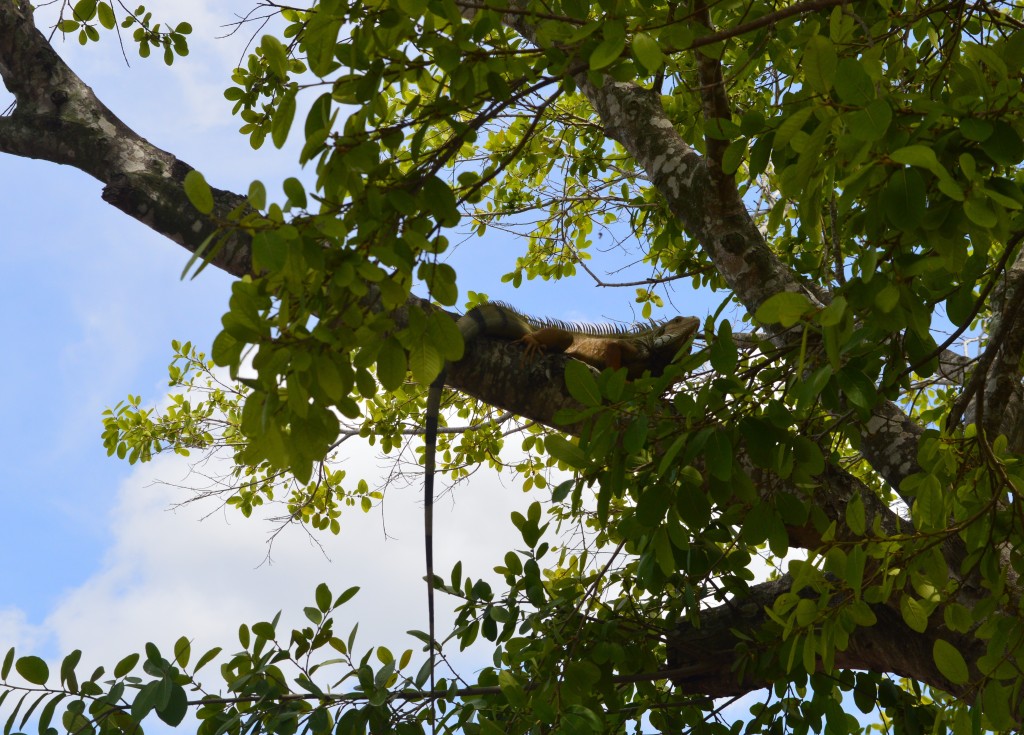
After lunch, we continued along the promenade past the Plaza del Moral. Walking through this quiet square, it was difficult to imagine that Simón Bolívar, “El Libertador”, once stood here rounding up hundreds of men to fight the Spanish a couple of years after the town had declared independence.
Lizards with a bright green skin scurried along the river bank as we walked along towards the handsome Iglesia de San Francisco. It was then back to our hotel for a break from the heat and an afternoon siesta.
As we headed out for dinner in the evening, we noticed a few female police officers stood around the Plaza de Bolívar, assumedly preparing for an upcoming event. All of them were short in stature, with slight builds and beautiful faces. We said hello to one we passed and she smiled bashfully, curling a stray hair behind her ear.
For dinner we chose Verde Oliva in the Plaza Real de la Concepción. It was another restaurant with a structure and decor that resembled former stables. We ate delicious woodfired pizza and drank freshly made iced lemonade. At 63,000 pesos, it was yet another great meal that reminded us how overpriced many restaurants in Cartagena are.
We walked back through the Plaza Real de la Concepción, seeing young kids running around under the softening sky. The heat of the day would make us fall asleep early, content with our time exploring this little gem in northern Colombia.
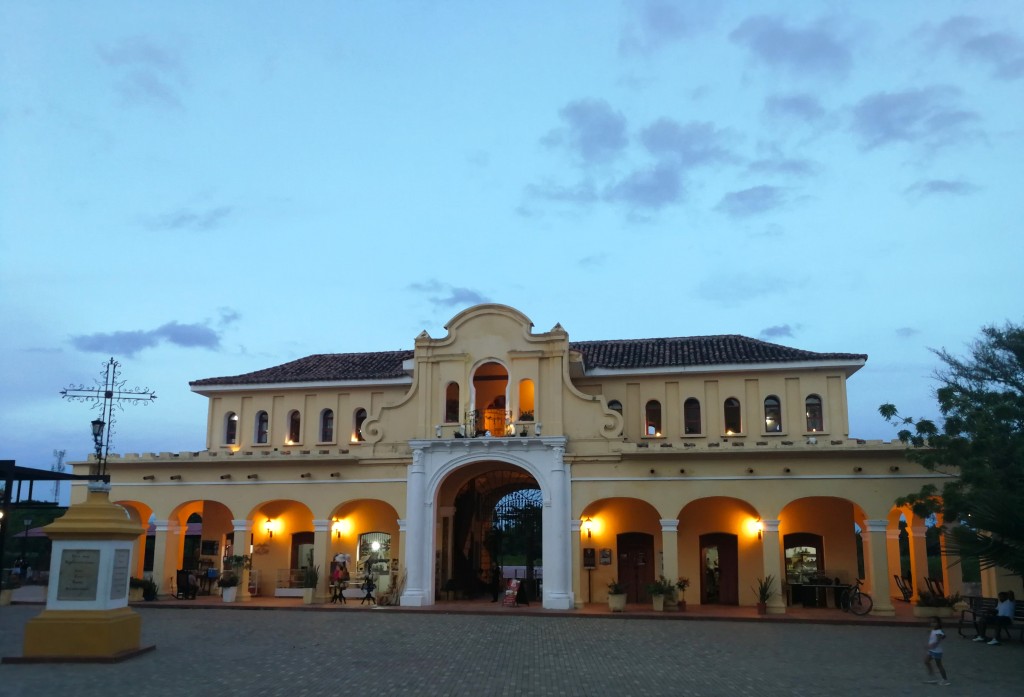
Santa Cruz de Mompox was a charming town in which we could enjoy beautiful architecture, explore areas of historical significance, and observe local culture at a relaxed pace. There is no rushing around in this town; instead, it’s a place in which you want to take your time soaking up the elements and small details. A place where you’ll want to speak as little English as possible, preferring to let your mind drift off in a daydream, escaping from your normal reality.
The journey to Mompox and our time in the town reminded us of our privilege, but also exemplified that having material things does not guarantee happiness and having wealth does not make someone a generous person. Here we encountered a collective spirit of kindness and generosity that will not be forgotten. Although we did not stay long in Mompox, our time in Colombia wouldn’t have been as special had we not visited it. The sights of Mompox are embedded in my memory, but the soul of the community is treasured in my heart.

